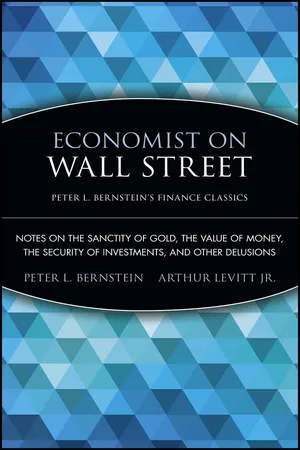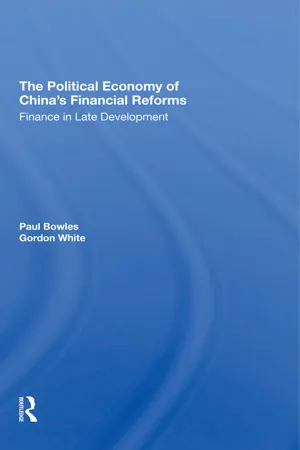Consequences of Inflation
Consequences of inflation refer to the effects of a sustained increase in the general price level of goods and services in an economy. These consequences can include reduced purchasing power, uncertainty for businesses and consumers, redistribution of wealth, and potential negative impacts on savings and investment. Inflation can also lead to higher interest rates and decreased international competitiveness for a country's exports.
4 Key excerpts on "Consequences of Inflation"
- eBook - ePub
- Thomas Crump(Author)
- 2011(Publication Date)
- Routledge(Publisher)
...In any sector to which it applies, it means that the prices of outputs have to be increased ‘defensively’, simply because of the increased cost of inputs—such as labour, or imported raw materials (Flemming, 1976, p. 12). Everything is blamed on the trade unions, or on the OPEC lands (particularly those whose religion is Islam). This latter case has the advantage of being able to show that the inflation is triggered off from outside the sphere of payment, allowing the authorities to adopt a convenient air of injured innocence. In considering the causes of inflation one is confronted with a vicious circle. There are quite logical arguments to prove that neither ‘cost-push’ nor ‘demand-pull’ can be a cause of inflation (Machlup, 1969, pp. 151f.). Inflation is in fact a vicious circle, and ‘demand-pull’ and ‘cost-push’ are little more than two sides of the same coin. So also, once inflation is started, is it difficult to distinguish between cause and effect, a point to be borne in mind in the following section. The Consequences of Inflation The Consequences of Inflation are twofold: the redistribution of purchasing power and the revaluation of assets and liabilities. As to the first, each separate sector in the economic complex sees its money income increased at different stages in the inflationary cycle. For every such sector two factors are critical: the first is the amount of the increase accruing to it; the second, the time at which it occurs. The significance of the first factor may be evaluated in terms of the share of the sector concerned in the aggregate flow of money— MV in Fisher’s equation. The immediate result of an increase in the income accruing will be to increase this share, and although this must lead to a decrease in the share of other sectors, this need involve no loss in real terms so long as it corresponds to a rateable increase in productivity...
- eBook - ePub
Inflation, Income Distribution and X-Efficiency Theory
A Study Prepared for the International Labour Office...
- Harvey Leibenstein(Author)
- 2022(Publication Date)
- Routledge(Publisher)
...These are to be contrasted to such products as oil, for which substitution is much more difficult. In cases of sensitive primary products, it is usually possible for governments to manipulate the price received by farmers versus the price that goods sell for on international markets and, as a result, this is likely to be an area where the political aspects of inflation will be significant. An unusual aspect of the literature on the impact of inflation on developing countries is that there is almost no systematic work available. In particular, systematic work which assessed the gains and losses to various segments of the population as a consequence of inflation should exist, and is certainly feasible, but is absent. A systematic analysis would look upon the inflation process as a zero-sum game which takes real income from some and distributes it to others. Even if this were done on a group-by-group basis, it would only average the gains and losses of the different groups, despite the fact that there are gains and losses within any group. Even this sort of information would be extremely revealing. Yet, from an empirical viewpoint, no studies of this sort exist. Although, once the question is raised (and it seems an obvious one), it suggests some obvious types of exercises and calculations; if not raised, it simply does not seem to come up as an important intellectual issue among development economists. Most of the work concentrates on the causes of inflation rather than on the consequences. Perhaps part of our difficulty in understanding causes of inflation is because so little systematic work has been done on the consequences. There are of course intrinsic difficulties in doing the sort of studies suggested in the previous paragraph. The data are not likely to come in pure form, but are likely to involve changes as a consequence of economic growth and decline, as well as the differential productivity of different sectors...
- eBook - ePub
Economist on Wall Street (Peter L. Bernstein's Finance Classics)
Notes on the Sanctity of Gold, the Value of Money, the Security of Investments, and Other Delusions
- Peter L. Bernstein(Author)
- 2008(Publication Date)
- Wiley(Publisher)
...All of this is confirmed by recent European experience, where the degree of price inflation has been three to four times as intense as our own and has been accompanied by prolonged and deep declines in the prices of common stocks. This is, in short, a subject in which unsophisticated oversimplification is likely to be wrong and even positively dangerous.The causes and Consequences of Inflation are more complex and obscure than the average level of Wall Street conversation might suggest. Yet, we may be able to uncover a possible, although by no means certain, solution to the riddle of why the prices of goods and services rose so much from 1957 to 1961 when the pressure of inflationary forces was so much less than it was from 1961 to 1965. The following little table should make this clear: Thus, with wages rising faster and productivity more slowly in the earlier period, the increase in labor cost per unit of output was obviously much greater than it was in the following four years. This provides another ironic twist: Who would have expected wages to go up more when unemployment was growing than when it was shrinking? These data suggest other intriguing links among the various parts of the economic process. The combination of tax cuts (including the investment credit) and an expansionary monetary policy surely contributed to the more rapid growth in the demand for goods and services in the later period. This in turn created the proper environment for businessmen to be willing to take the risks of sinking more money into capital equipment, thereby leading in turn to greatly improved productivity. The consequent easing of the upward pressure of costs meant more stable prices—and this moderated the demands of the unions for higher wages. In the present conjuncture of events, a fundamental inflationary condition is intensified by an increasingly militant stand on the part of the unions...
- eBook - ePub
The Political Economy Of China's Financial Reforms
Finance In Late Development
- Paul Bowles, Gordon White(Authors)
- 2019(Publication Date)
- Routledge(Publisher)
...5 Policy Outcomes: The Macroeconomic and Microeconomic Impact of Financial Reform IN THIS CHAPTER we focus more precisely on the macroeconomic and microeconomic impact of financial reform, particularly the outcomes of the period 1985 to 1988, when substantial progress was made in the directions desired by the reformers. The problems which emerged at both macro- and micro-levels during this phase seem to have been endemic to the process of financial reform; further elaborating how and why they occurred will be useful for our later analysis of the prospects for further financial reforms in the 1990s. We start by analysing the roots of the inflationary crisis of 1988-1989 and then assess the impact of financial reforms on the behaviour of enterprises. Inflation Our analysis of the process of financial reform has suggested that the second phase of the reforms from 1984-1985 onwards was initiated by the desire of the reformers to push further down the road to liberalisation, a desire given impetus by the key agents involved, who had interests in the creation of an increasingly decentralised financial system. This process, however, had as an unintended outcome the double-digit inflation of 1988 and 1989. We suggested in Chapter 4 that the pressures placed upon the reformed financial system, and on the banks in particular, by key agents in the economy was a major reason for the loss of macroeconomic control. We wish to examine this aspect further and to explore exactly how the dynamics of the process of financial reform contributed to inflation. The acceleration in inflation is clear from official price data, even though measuring inflation is a problematic exercise in China. These problems arise from the fact that the same goods often have multiple prices (being sold at administered and free market prices) as a result of the "dual track" pricing system and that there is rationing of some goods...



